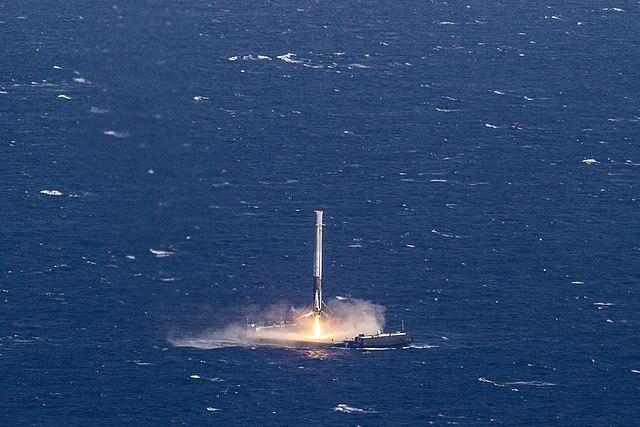Vertical takeoff, vertical landing (VTVL) is a form of takeoff and landing for rockets. Multiple VTVL craft have flown. The most successful VTVL vehicle was the Apollo Lunar Module which delivered the first humans to the Moon. Building on the decades of development, SpaceX utilised the VTVL concept for its flagship Falcon 9 first stage, which has delivered over two hundred successful powered landings so far.
Apollo 16 LM Orion on the lunar surface, 1972
DC-XA landing in 1996
A Falcon 9 first stage performing a vertical landing, 2016
A Falcon 9 first stage landing on 21 December 2015 after boosting commercial satellites to low Earth orbit
Aircraft have different ways to take off and land. Conventional airplanes accelerate along the ground until reaching a speed that is sufficient for the airplane to takeoff and climb at a safe speed. Some airplanes can take off at low speed, this being a short takeoff. Some aircraft such as helicopters and Harrier jump jets can take off and land vertically. Rockets also usually take off vertically, but some designs can land horizontally.
An airliner flaring at London Heathrow Airport (Air Jamaica Airbus A340-300)
A landing Qantas Boeing 747-400 passes close to houses on the boundary of London Heathrow Airport, England
A mute swan alighting. Note the ruffled feathers on top of the wings indicate that the swan is flying at the stalling speed. The extended and splayed feathers act as lift augmenters in the same way as an aircraft's slats and flaps.
An unusual landing; a Piper J3C-65 Cub lands on a trailer as part of an airshow.








